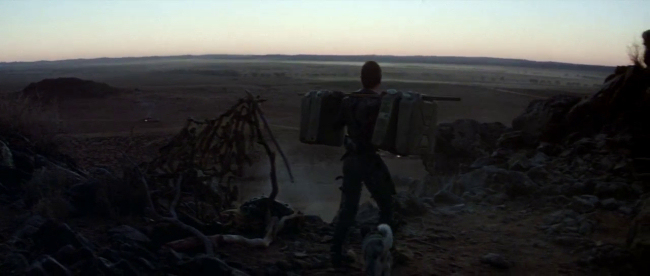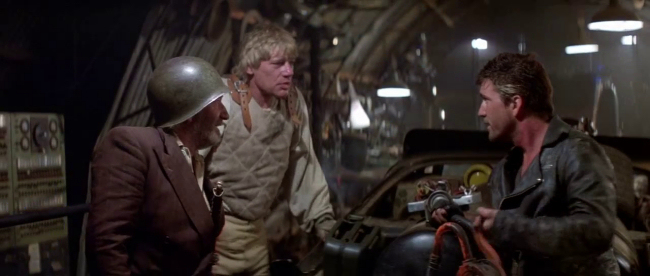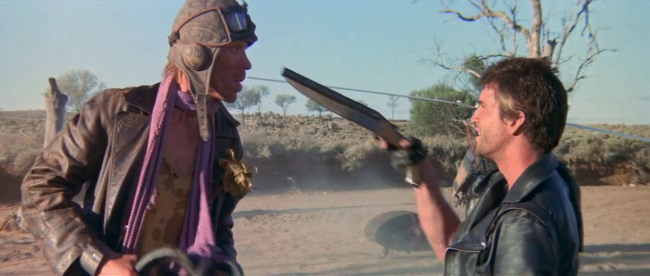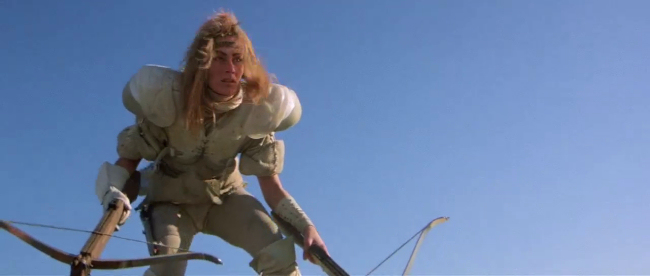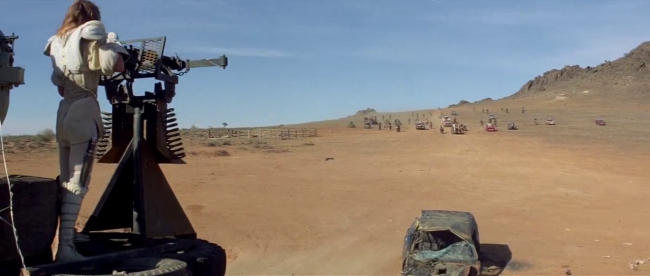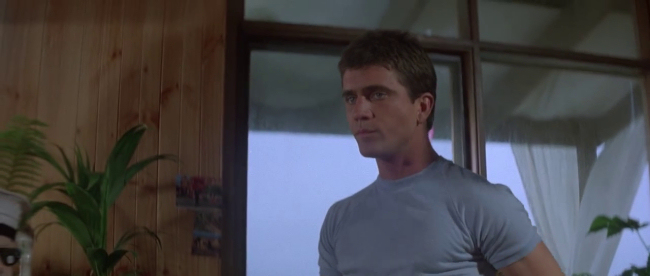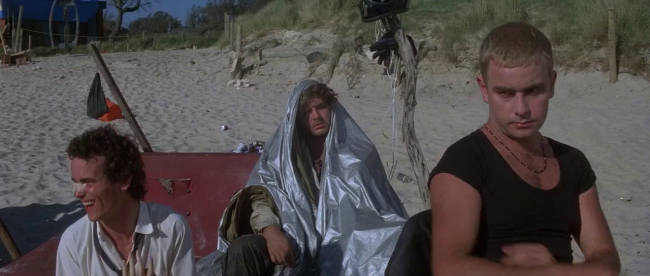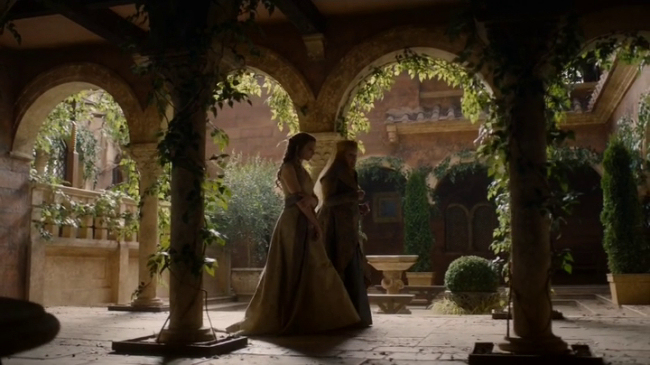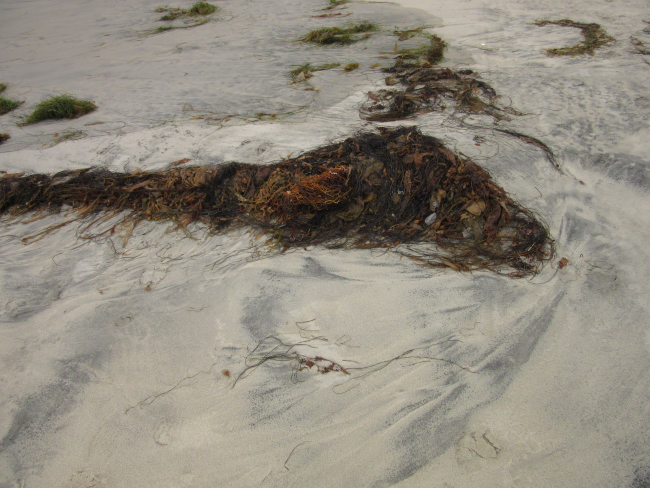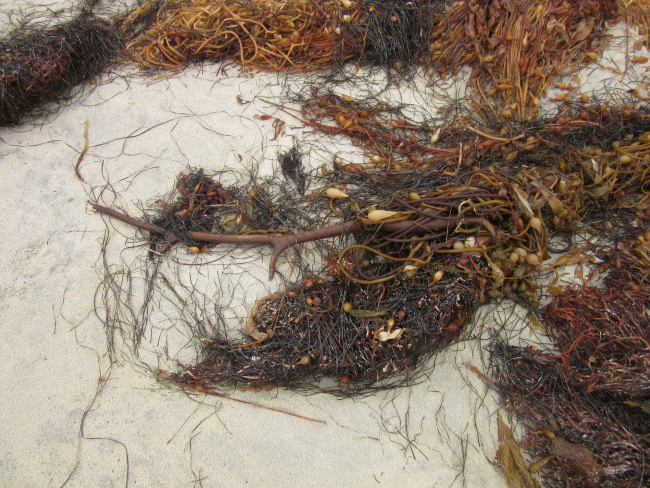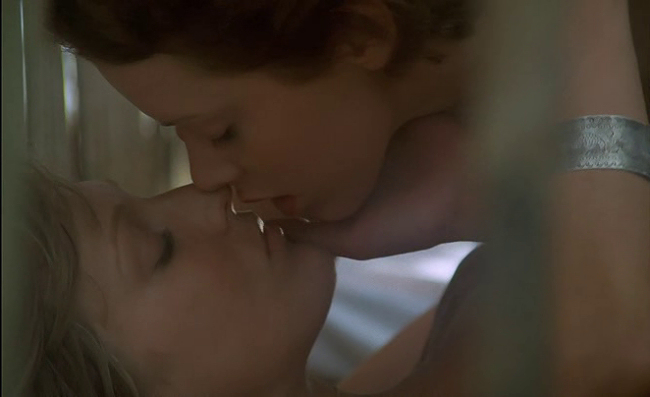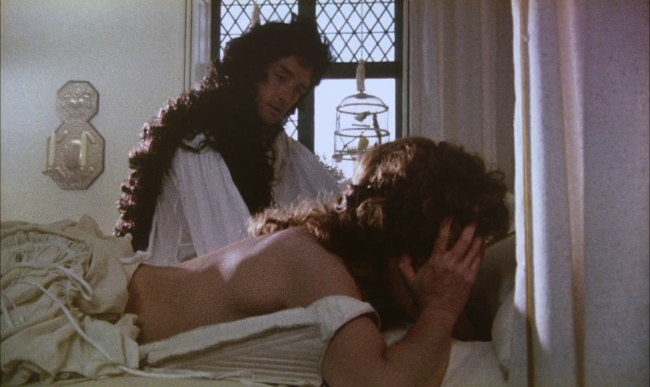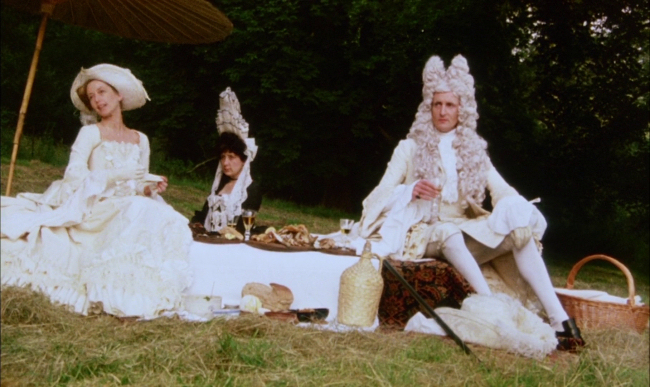
So from cop movie to Spaghetti Western, Max arrives on his third outing at a Science Fiction film with 1985's Mad Max Beyond Thunderdome. By reputation, I expected this film to be the watered down, Hollywood big budget version of Mad Max and I found this somewhat true and yet there is quite a lot to appreciate in its visuals and characters.
It seems like we're in for another Spaghetti Western in the beginning which borrows a crane shot from Sergio Leone to establish Bordertown--starting with a wooden sign to sweep over a bustling crowd like a shot from Leone's Once Upon a Time In the West.

This is one of my favourite sequences in the film as Max--Gibson again with the same weird long hair with really short hair in the middle he'd have in Braveheart--makes his way through the motley tide of merchants and punks into some man-made caverns. There's a real sense of chaotic, strange human existence going on reminiscent of a Terry Gilliam movie but again with the seemingly spontaneous manifestations of high fashion.

Soon Max meets the woman more or less in charge of Bartertown--played by Tina Turner who, with the only American accent in the film, seems slightly out of place but isn't so bad. She rules the town like a stage, involving a lot of strutting and charm. The people call her "Aunty", bringing to mind India and the particular affectionate place "Aunties" hold in Indian culture.

Thunderdome itself proves to be the real weak point of the film. Max picks a fight with Aunty's rival for Bordertown rule--Master Blaster, who is in fact two people; Master (Angelo Rossitto), a little person who rides on the shoulders of Blaster (Paul Larsson), a very big person. Max and Master Blaster settle their dispute in Thunderdome, a community arena designed for the purpose where "Two men enter, one man leaves." I can't imagine many people accepted the sense in how Max's fight with Blaster ends.
It's one of a few moments in the film where rather hazy logic connects one act to another. I won't spoil it for you but suffice to say the next act has Max wandering the desert until he encounters a tribe of children living in a canyon oasis.

The movie's filled with homages, this sequence purportedly borrowing heavily from a novel called Riddley Walker which I've never read, borrowing not only plot elements but names without attribution. It's really puzzling--if directors George Miller and George Ogilvie were going to steal something, you'd think they'd be more discreet about it. But considering the concept was hardly original to Riddley Walker--a tribe whose mythology and dialect have devolved and evolved from familiarity with things of the modern world--Miller and Ogilvie could have easily gotten away with it if they'd just avoided names. Personally, I was reminded of one of my favourite Doctor Who serials, the 1977 story The Face of Evil where the Doctor encounters a primitive tribe called the Sevateem--a corruption of the term "Survey Team", the ancestors of the tribe who'd originally landed on the planet.
Beyond Thunderdome's version is pretty adorable. I liked how they tell their history with a crude facsimile of a television.

The end of the film swings back towards Western with a train chase, an action sequence where the film starts to feel like it has some of the life exhibited in the previous film. It never quite ascends to that level but it does have a lovely sense of a big, strange world.

